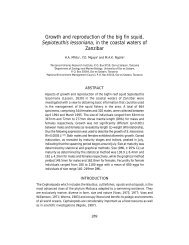gpa_east_africa_case.. - GRID Africa GeoPortal - UNEP
gpa_east_africa_case.. - GRID Africa GeoPortal - UNEP
gpa_east_africa_case.. - GRID Africa GeoPortal - UNEP
You also want an ePaper? Increase the reach of your titles
YUMPU automatically turns print PDFs into web optimized ePapers that Google loves.
DATA SOURCESThis Report utilises information provided by the following National Reports prepared bynational experts commissioned by the Institute of Marine Science within the framework ofthe GPA Strategic Action on Sewage.1. National Report on Mombasa - Kenya2. National Report on Dar es Salaam - Tanzania3. National Report on Beau Vallon - SeychellesThe National Reports were prepared in response to an outline questionnaire designed tocover data requirements pertaining to the following categories:1. Background data on the physical features, environmental conditions, population andemployment profile, income and hot-spot locations and place names;2. Information on sewage sources and the impacts on environmental resources;3. Data on the of socio-economic importance of the resources affected by pollution;4. Data on the extent and impacts of pollution and the estimated losses incurred (impacts onproductive activities, health, tourism and natural resources);5. Information on projects and measures recently implemented and their estimated cost;6. Information on planned projects and measures and their cost.City level information on the above contained in the National Reports included several gaps,both on project costs and data on production losses necessary for the estimation of futurebenefits. Assumptions were used to derive indicators to move forward and show (a) how gapsmay be addressed until more accurate data become available and (b) how they can be fittedinto the framework developed in this Report.The National Reports were reviewed and edited to extract information to fit, as much aspossible, into the following framework, constructed to be used for the development of theCase Studies:1. City location and setting: To provided an introduction to the city setting and itsenvironmental and socio-economic profile;2. Existing problems: To Identify the main pollutants, their sources and the hot spotlocations;3. Quality of environmental resources: To provide basic indicators of the quality of theresources affected by sewage and their socio-economic significance;4. Environmental impacts: To assess the severity of environmental impacts in relation to“productivity”, health conditions, poverty concerns and biodiversity;5. Cost of impacts: To estimate the cost of the main environmental impacts - focusingprimarily on measurable market-based damages on health, tourism, property values and,to the extent possible, on the identification of “non-use” qualitative aspects of the coastalenvironment;6. Investment cost of projects: To put together available information on current andproposed projects to address pollution impacts and derive indicative cost estimates;7. Expected benefits: To estimate the value of benefits (avoided losses) expected toaccrue from the implementation wastewater projects;8. Cost-Benefit analysis put together: To put forward a Cost-benefit framework, bringtogether the estimated costs and benefits, set out the assumptions and estimationmethods, and, based on the available information and the use of assumptions, calculatethe approximate Net Present Value of the proposed projects.It is important to stress that the development of the Case Studies relied on existing data madeavailable by the National Reports. The National Reports were of high quality and detailed onseveral environmental issues but contained economic data gaps that could not be adequatelyeliminated and are reflected in the Case Studies. However, the Case Studies provide theframework to guide future work to address gaps supported by the analytical frameworkconstructed by the Case Studies.Final Draft Report – Cost Benefit Case StudiesGPA Strategic Action Plan on Sewage, October, 20007



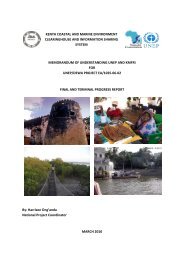
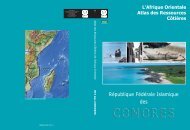
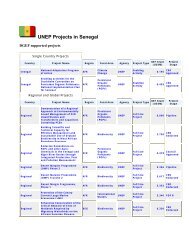

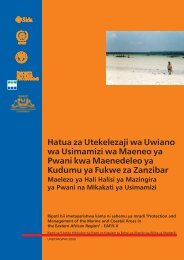
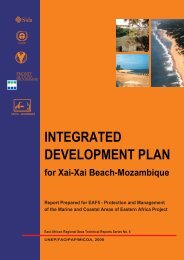
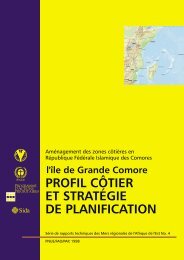
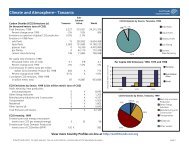

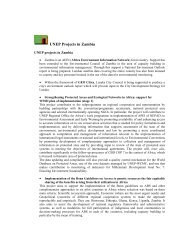
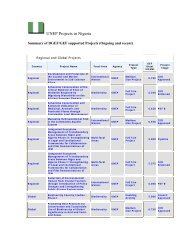
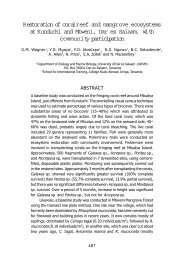
![Please Click to download [English] - GRID Africa GeoPortal - UNEP](https://img.yumpu.com/30633391/1/184x260/please-click-to-download-english-grid-africa-geoportal-unep.jpg?quality=85)
